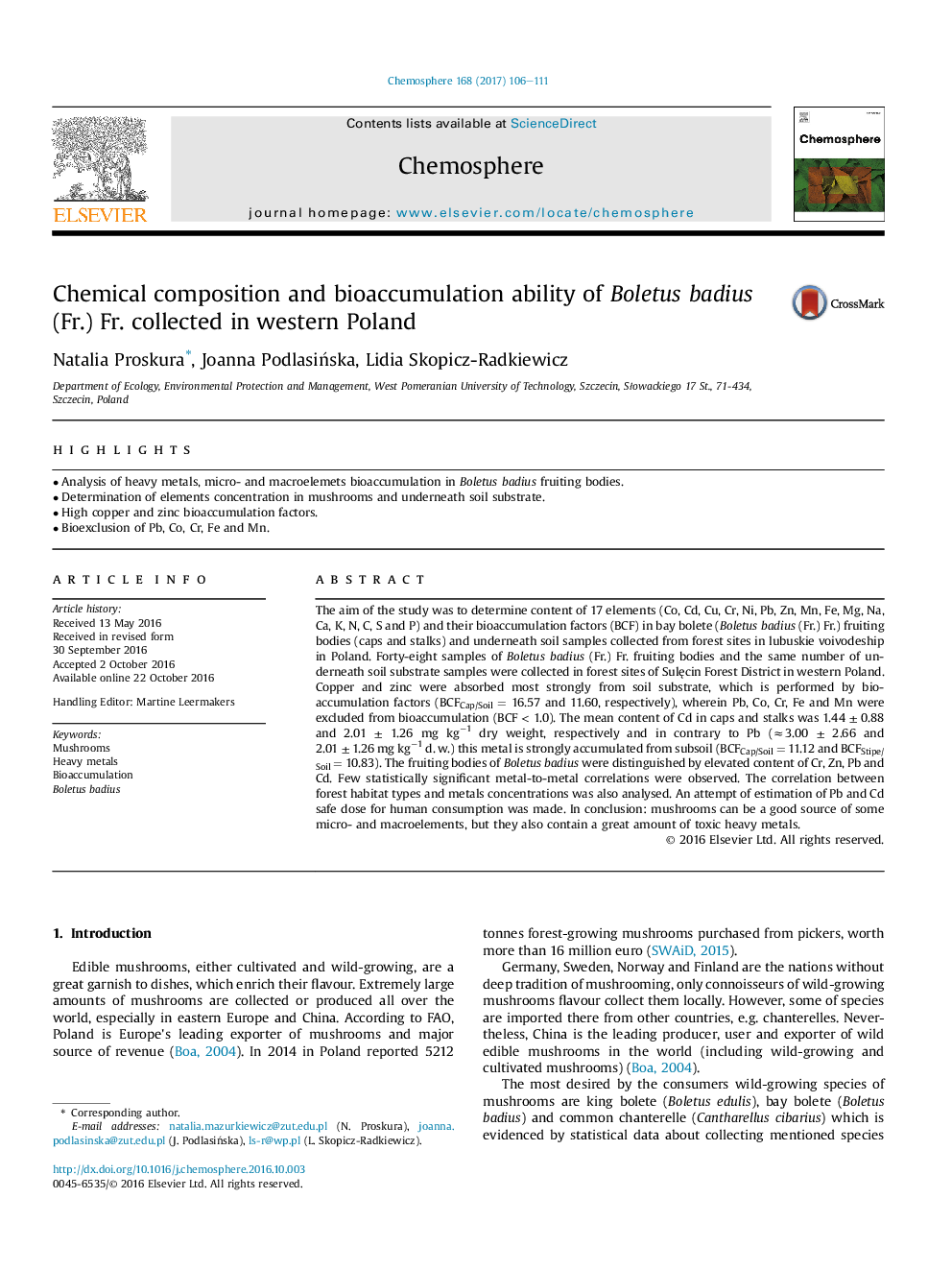| Article ID | Journal | Published Year | Pages | File Type |
|---|---|---|---|---|
| 5746585 | Chemosphere | 2017 | 6 Pages |
â¢Analysis of heavy metals, micro- and macroelemets bioaccumulation in Boletus badius fruiting bodies.â¢Determination of elements concentration in mushrooms and underneath soil substrate.â¢High copper and zinc bioaccumulation factors.â¢Bioexclusion of Pb, Co, Cr, Fe and Mn.
The aim of the study was to determine content of 17 elements (Co, Cd, Cu, Cr, Ni, Pb, Zn, Mn, Fe, Mg, Na, Ca, K, N, C, S and P) and their bioaccumulation factors (BCF) in bay bolete (Boletus badius (Fr.) Fr.) fruiting bodies (caps and stalks) and underneath soil samples collected from forest sites in lubuskie voivodeship in Poland. Forty-eight samples of Boletus badius (Fr.) Fr. fruiting bodies and the same number of underneath soil substrate samples were collected in forest sites of SulÄcin Forest District in western Poland. Copper and zinc were absorbed most strongly from soil substrate, which is performed by bioaccumulation factors (BCFCap/Soil = 16.57 and 11.60, respectively), wherein Pb, Co, Cr, Fe and Mn were excluded from bioaccumulation (BCF < 1.0). The mean content of Cd in caps and stalks was 1.44 ± 0.88 and 2.01 ± 1.26 mg kgâ1 dry weight, respectively and in contrary to Pb (â3.00 ± 2.66 and 2.01 ± 1.26 mg kgâ1 d. w.) this metal is strongly accumulated from subsoil (BCFCap/Soil = 11.12 and BCFStipe/Soil = 10.83). The fruiting bodies of Boletus badius were distinguished by elevated content of Cr, Zn, Pb and Cd. Few statistically significant metal-to-metal correlations were observed. The correlation between forest habitat types and metals concentrations was also analysed. An attempt of estimation of Pb and Cd safe dose for human consumption was made. In conclusion: mushrooms can be a good source of some micro- and macroelements, but they also contain a great amount of toxic heavy metals.
